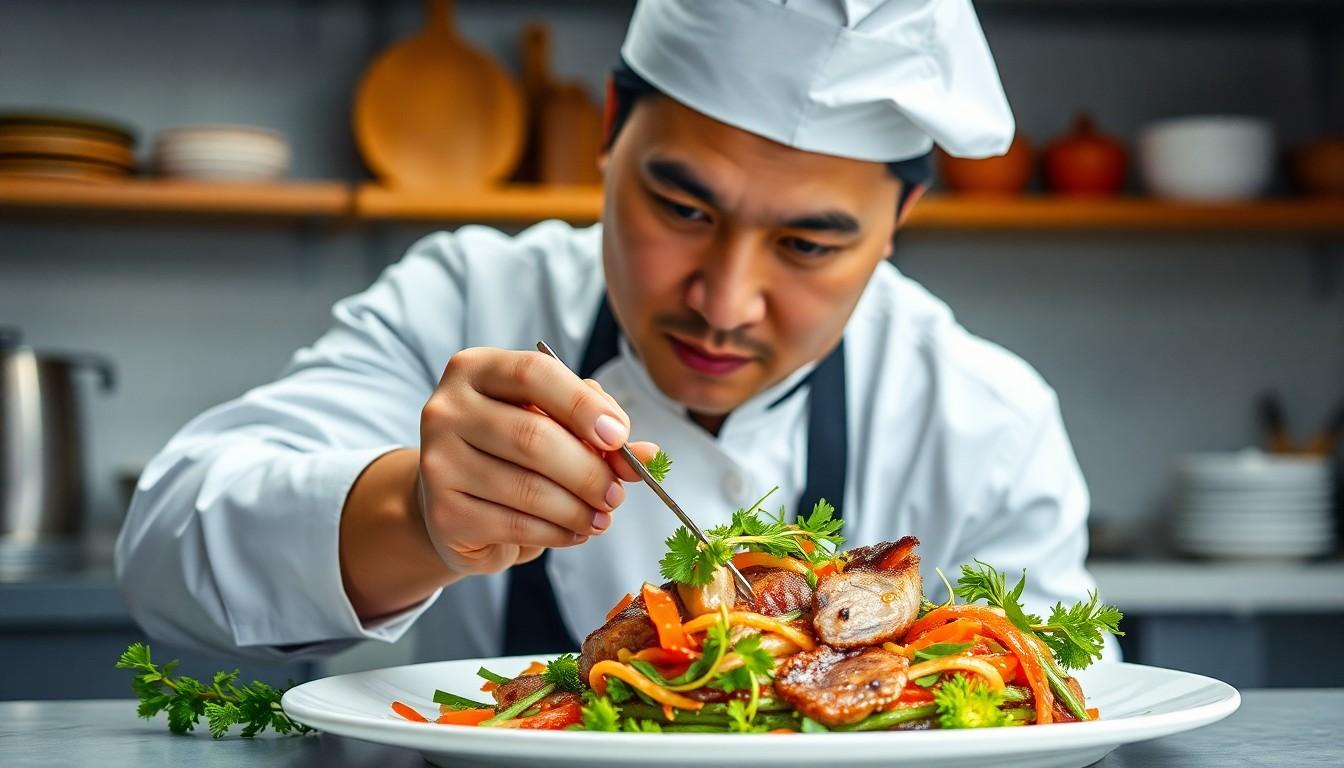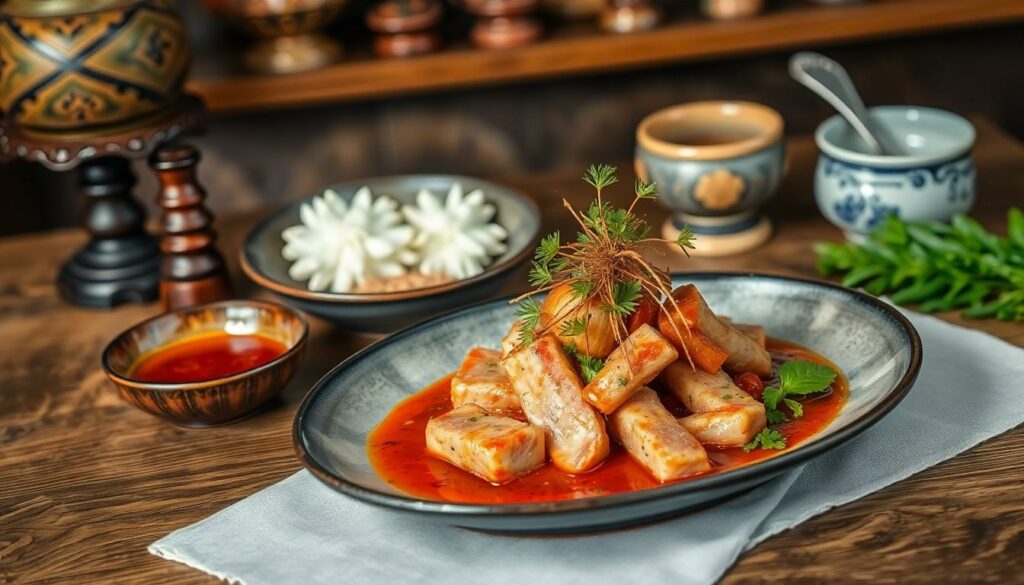When it comes to cuonbumi, the price tag often raises eyebrows. What could possibly make this dish so costly? Is it sprinkled with gold dust or infused with unicorn tears? While the truth may not be as whimsical, there are several compelling reasons behind its premium cost.
Why Cuonbumi So Expensive
Craftsmanship plays a significant role in cuonbumi’s expense. Artisans invest time and skill into every element, ensuring that each dish resonates with quality. Ingredients sourced from specific regions also enhance its allure. Fresh herbs, premium meats, and specialty sauces contribute to unique flavors that customers crave.
Tradition adds depth to cuonbumi’s appeal. Cultural significance elevates the dish beyond mere sustenance, transforming it into an experience that connects diners to heritage. Dining on cuonbumi often means savoring a piece of history, which many find invaluable.
Limited availability influences pricing. Certain ingredients may only appear in specific markets or seasons. Scarcity drives demand, making it a sought-after item. The effort of sourcing unusual components combines with the narrative behind each dish to justify higher costs.
Presentation captivates diners and influences perceptions of worth. Visually striking arrangements enhance the dining experience, making meals feel luxurious. People often associate beauty with value, further establishing cuonbumi as a premium choice.
Local markets frequently showcase cuonbumi, but variations exist across regions. Many local chefs adapt traditional recipes, adding personal flair and creativity. This diversity illustrates how cuonbumi evolves while honoring its roots.
Understanding these elements sheds light on why cuonbumi commands such prices. Each factor, from craftsmanship and tradition to limited availability and presentation, contributes to the overall allure, making the dish a highly regarded culinary choice.
Factors Contributing to High Prices

Several key elements drive the premium pricing of cuonbumi, making it a distinctive culinary choice.
Quality of Ingredients
Ingredients play a crucial role in the cost of cuonbumi. Chefs often source fresh herbs from specific regions renowned for their unique flavors. Premium meats contribute significantly to the dish’s quality, elevating the dining experience. Specialty sauces, meticulously crafted, enhance taste and complexity. Sourcing sustainably and locally also affects pricing, as it ensures freshness and authenticity. Each ingredient, chosen with care, reflects the commitment to quality that diners expect.
Labor and Craftsmanship
Labor and craftsmanship significantly influence the cost of cuonbumi. Skilled artisans devote extensive time to perfecting each dish, showcasing their expertise and dedication. Attention to detail marks the preparation process, ensuring flavors meld beautifully. Chefs willing to invest in traditional techniques enrich the dish’s authenticity and depth. Moreover, the artistry in presentation creates a dining experience that captivates patrons. Such dedication to craft translates into higher prices while honoring culinary traditions.
Market Demand and Rarity
The high cost of cuonbumi stems from its market demand and rarity, which play crucial roles in determining its price.
Cultural Significance
Cultural significance imbues cuonbumi with depth and value. This dish connects diners to their heritage, showcasing traditional flavors and recipes. Each bite tells a story of its origin and historical context. Chefs emphasize these cultural elements, reinforcing the dish’s importance within the culinary landscape. Events and gatherings highlight cuonbumi’s role in celebrating traditions, driving demand. Consequently, as interest in cultural experiences grows, so does the willingness to pay a premium for authentic cuonbumi.
Limited Availability
Limited availability of key ingredients heavily influences cuonbumi’s pricing. Certain herbs and specialty meats originate from specific regions, making them rare finds. Chefs prioritize quality over quantity, sourcing only the freshest elements to ensure authenticity. Seasonal fluctuations further reduce accessibility, heightening the demand as supply diminishes. As a result, customers often encounter higher prices due to the scarcity of these essential components. Local markets present unique offerings, yet the limited nature of these ingredients adds an exclusivity factor that justifies elevated costs.
Comparisons with Other Culinary Options
Cuonbumi’s expense becomes more apparent when compared to other culinary options. The use of specific, high-quality ingredients stands in stark contrast to dishes that rely on more commonplace items. Fresh herbs and premium meats often elevate cuonbumi’s value, attracting discerning diners who prioritize flavor and quality. In contrast, many traditional dishes may use standard ingredients, which generally lowers their price point.
Artisan craftsmanship plays a crucial role in cuonbumi’s uniqueness. Chefs dedicate significant time and skill to perfecting each dish, ensuring a higher level of care compared to mass-produced meals. Other culinary options may prioritize speed over artistry, leading to variations that lack the same depth of flavor and presentation.
Market demand influences pricing significantly across all culinary sectors. Seasonal fluctuations affect cuonbumi’s ingredients, creating scarcity and driving up its cost. Unlike more ubiquitous options, cuonbumi’s limited availability often captivates diners, encouraging a willingness to pay for the experience. Dishes less reliant on rare ingredients typically remain more affordable as they can be produced year-round.
Visually, cuonbumi excels with striking presentations that enhance its desirability. The artistry involved in plating distinguishes it from simpler fare that doesn’t command the same attention. Events and gatherings often feature cuonbumi, celebrating its cultural significance, while many other dishes lack this celebratory context.
Ultimately, when weighing cuonbumi against other culinary choices, its combination of superior ingredients, skilled craftsmanship, and cultural relevance sheds light on its premium pricing. Each of these factors underscores why cuonbumi remains a highly regarded option in the culinary landscape.
Artistry
Cuonbumi’s high price tag reflects a blend of artistry and cultural significance. The meticulous craftsmanship and premium ingredients elevate it beyond a mere meal into a culinary experience. As chefs embrace traditional methods while adapting to modern tastes, the dish’s rarity and seasonal availability further enhance its allure. This combination of factors creates a demand that justifies its cost. For those seeking authentic flavors and a connection to heritage, cuonbumi remains a worthwhile investment that celebrates both tradition and innovation in the culinary world.

